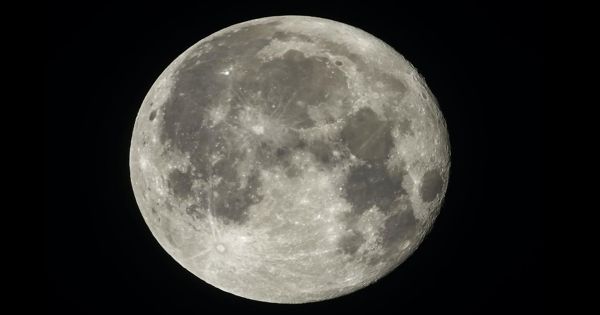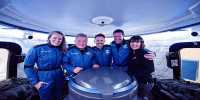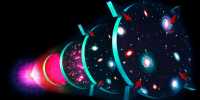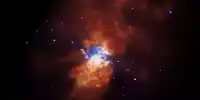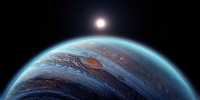Microbiologists at the United States Naval Research Laboratory are preparing experimental fungi samples for a trip around the moon, which is tentatively scheduled for late 2021 or early 2022. The experiment aims to shed light on fungi’s natural radiation defenses, a phenomenon that could be useful for future space exploration and long-term life in space.
“We successfully completed the Scientific Verification Test to ensure the experiment is working in our lab, which is the first step of this project,” said Zheng Wang, NRL microbiologist and project principal investigator. “In addition, we have completed the Experimental Verification Test at Kennedy Space Center since October 2020, which simulates the flight environment for about two months.”
Fungi have natural mechanisms for defending against and repairing DNA damage caused by radiation. These mechanisms allow fungi to withstand hundreds of times more radiation than humans. This experiment will look at melanin in fungi (which may help them protect themselves from damage) as well as DNA repair pathways (which repair damage once it occurs). Aspergillus niger, a black mold commonly used in laboratories and industry, will be used for this experiment. It is also one of the most common fungi detected on the International Space Station (ISS).
The researchers are preparing four different samples of Aspergillus niger—one wild-type strain and three mutated strains that were genetically engineered in the laboratory. One mutated strain is defective in making melanin, so it can be compared to the wild-type strain that does produce melanin.
“We’re looking at fungi that are extremely radiation-resistant and trying to figure out why,” said Jillian Romsdahl, a microbiologist and NRC postdoctoral fellow working on the project. “However, we are also interested in the larger question of how biological systems adapt to deep space, which has implications for people attempting to travel to Mars or further.”
The researchers are preparing four different samples of Aspergillus niger—one wild-type strain and three mutated strains that were genetically engineered in the lab. One mutated strain is incapable of producing melanin, so it can be compared to the wild-type strain, which does produce melanin.
The other two mutated strains will be deficient in DNA repair pathways. Wang’s team wants to know how important those DNA pathways are in protecting fungal cells from radiation damage. They also want to know if the radiation activates previously unknown DNA pathways.
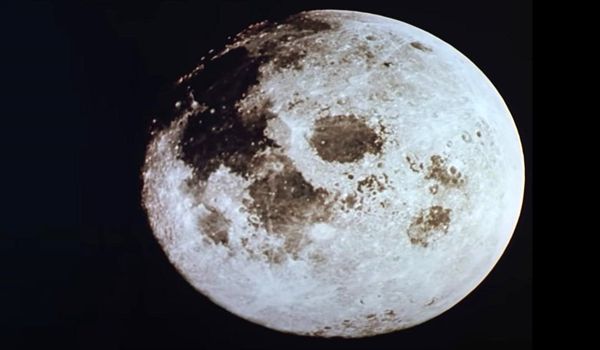
During the experiment, the fungal samples will be stored in NASA’s Orion capsule before being launched into space and traveling around the moon for three weeks. NASA will return the specimens to NRL for analysis once the work is completed.
The samples will be compared to look for changes in DNA and other biomolecules. The morphological, physiological, and chemical changes of the fungal cells will be thoroughly examined. Long-term, researchers hope to apply what they’ve learned to find new ways to protect humans and equipment in space from radiation damage.
The NRL team is looking into these research questions from a variety of perspectives. NASA recently selected Wang’s research group to study how melanized fungal cells adapt to Mars-like conditions using NASA’s Antarctic balloon platform. The team is also working with the Department of Defense’s Space Testing Program and the International Space Station National Laboratory to send fungal samples to the International Space Station to study how microgravity and radiation affect the production of beneficial biomaterials and biomolecules.
“Fungi are great at adapting”, Wang said. If we can harness their natural defense mechanisms, we could leverage biological systems to develop protective mechanisms for equipment or astronauts. As a DoD lab, NRL is in a great position for this. We have the facilities and the capabilities.”
Another researcher on the project, Zachary Schultzhaus, a former Jerome and Isabella Karle Distinguished Scholar Fellow, believes it is also possible to grow fungus in space to produce different molecules for therapeutic applications such as medicine or vitamins. Rather than carrying all of the food and medicine required for a mission, astronauts could produce it on-demand. He intends to delve deeper into the concept once his current research project is completed.
NASA is funding NRL’s research into the roles of melanin and DNA repair in the adaptation and survival of fungi in deep space, which is set to continue until 2022.
